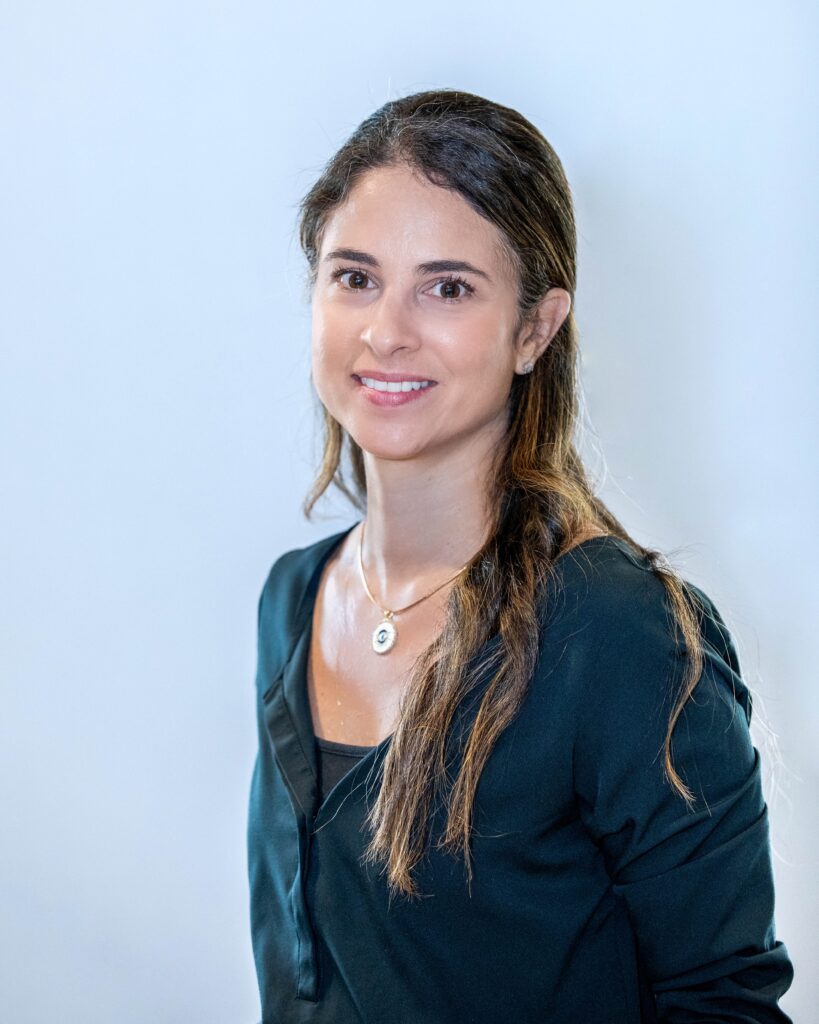
Our Architectural Heroes: Fabiana Leao

We recently sat down with Debowsky Design Group’s Director of Interior Design, Fabiana Leao, to talk about one of her biggest architectural influences: Zaha Hadid.
Who is an architectural influence of yours?
My personal favorite is Zaha Hadid, with Oscar Niemeyer at a close second.
Can you describe a specific work that has had a lasting impression on you and why?
The Galaxy SOHO by Zaha Hadid in Beijing, China. It’s the perfect example of Hadid’s fluid, futuristic style. I love the curvaceous shapes of the five dome-like buildings and how they are all connected by these platforms and bridges. So, when you’re walking through the complex, it feels like one, continuous experience that’s both indoors and outdoors. The rounded interconnectivity also means there’s no sharp corners or sudden transitions within the space, which is very calming, not to mention highly practical for a busy shopping complex with huge crowds.
What is it about this architect that draws you to their work?
Instead of adhering to traditional geometrical conventions, she makes up her own shapes and forms. Throughout her career, each project was more unique and innovative than the last, like she was continuously trying to outdo herself and push her creative boundaries further and further every time. Hadid is a reminder that the sky is the limit with architecture, and the endless possibilities we can come up with.
I also love how Hadid’s designs are inspired by nature. The Galaxy SOHO, for example, is modeled after China’s beautiful terrace farms and rice fields.
How has this architect influenced your own approach to architecture or design?
Hadid inspires me to always bring something unique to each project. Whether it’s the design, the materials, or the size, there’s always an opportunity to offer something new and different. With Hadid’s work, she continuously found new ways to not only make her projects stand out, but also enhance their harmony with nature and the surrounding environment.
She was very innovative when it came to maximizing natural light and recreating different aspects of nature. The Guangzhou Opera House in China is shaped to resemble two pebbles on the bank of the Pearl River, and the interior has thousands of tiny lights to resemble stars in the night sky.
If there is one critique about this architect’s work, what would it be?
Unfortunately, it costs money to be so bold and creative. Hadid often used expensive materials that weren’t accessible to the average architect, but that’s what she needed to use to bring her vision to life.
Critics of Hadid say that her projects are too extravagant and over the top, and that they only look appropriate in rich neighborhoods with other innovative and futuristic buildings. However, I like how unique and radical her designs are, and when people say something looks strange or out of place, it’s usually just because it looks different than what they are used to seeing. If Hadid wasn’t so out of the box, she wouldn’t have become the first female recipient of the Pritzker Prize in 2004.
If you could collaborate with this architect on any project, what would you like to create?
Zaha Hadid tragically passed away in 2016, but if I had the opportunity to collaborate with her, I would love to design some sort of public space that’s just as stunning on the inside as it is on the outside. Hadid’s designs were a marvel to behold, but she was just as dedicated to creating a seamless, open interior flow, which reflected her free and boundless approach to her architecture.
